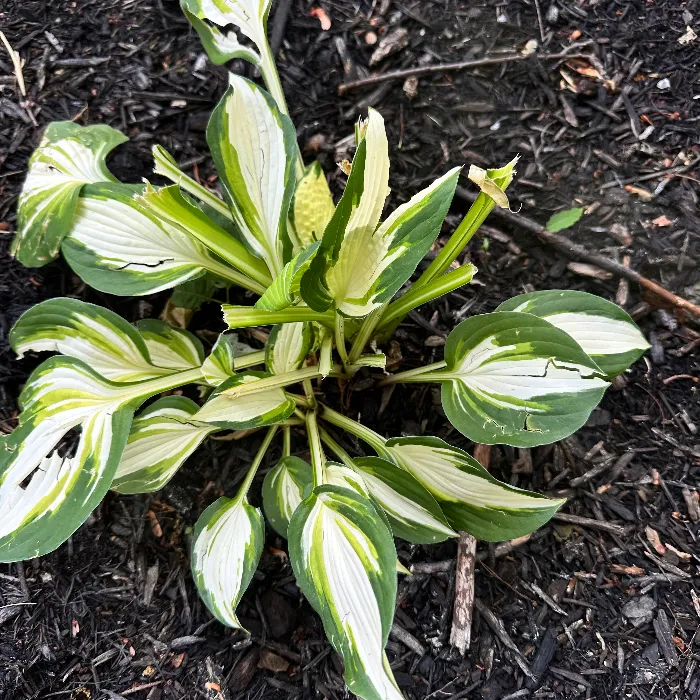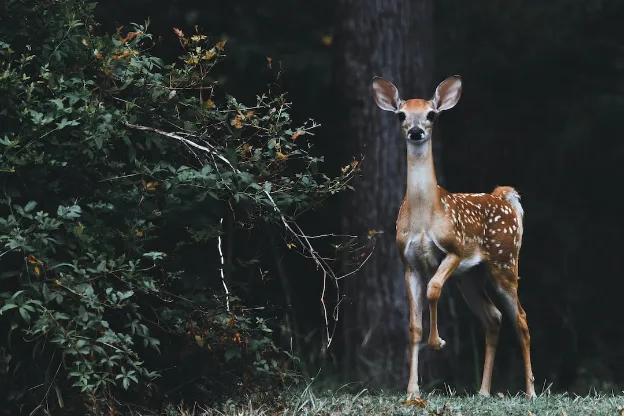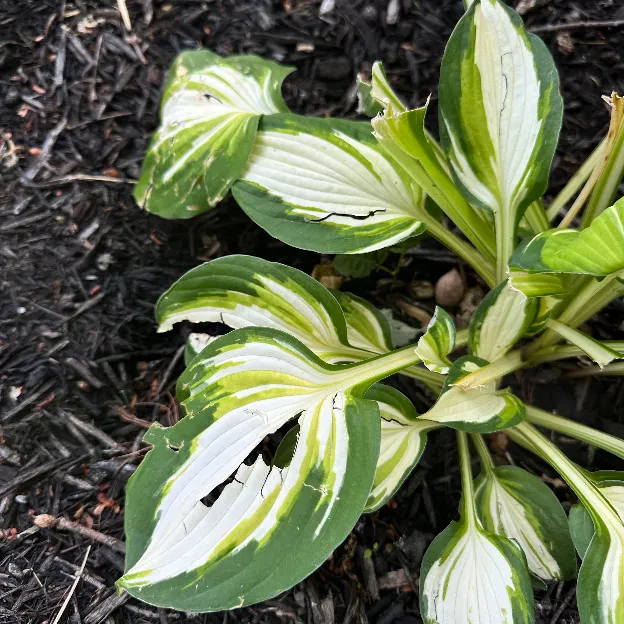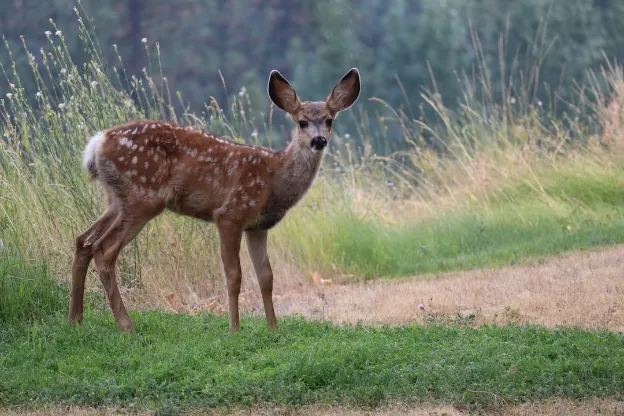Keeping Deer Away from Hostas: A Comprehensive Guide

-
"Guarding Your Hostas: A Comprehensive Guide to Keeping Deer at Bay"
-
- Introduction
- FAQs
- 5. Deer-Resistant Plants to Companion with Hostas
- 6. Repellents: An Effective Defense Mechanism
- 7. Sound and Visual Deterrents
- 8. Scare Tactics: Motion-Activated Devices
- 9. DIY Deer Repellents
- 10. The Role of Scents and Odors
- 11. Making Your Garden Less Attractive to Deer
- 12. Deer-Proofing Techniques for Hostas
- 13. Effective Ways to Discourage Deer Feeding
- Conclusion
Disclosure: Some of the links in this article may be affiliate links, which can provide compensation to me at no cost to you if you decide to purchase. As an Amazon Associate, I earn from qualifying purchases.
"Guarding Your Hostas: A Comprehensive Guide to Keeping Deer at Bay"
Introduction
When it comes to maintaining a beautiful garden, one of the most common challenges gardeners face is keeping deer away from their beloved hostas. Hostas are popular for many garden enthusiasts due to their lush foliage and vibrant colors.
However, deer find hostas irresistible and often feast on these plants, leaving gardeners frustrated and searching for effective solutions. This article will explore various strategies and techniques to protect your hostas from deer and keep your garden thriving.
1. Understanding the Deer Threat
Deer are beautiful creatures, but browsing habits can wreak havoc on a garden. To effectively protect your hostas, it's crucial to understand the motivations behind deer feeding.
Deers primarily feed on vegetation, especially in areas with limited natural food sources. This is where your garden comes into play.
Hostas are particularly enticing to deer due to their succulent leaves, which provide a tasty treat for these hungry animals.
2. Identifying Signs of Deer Damage
Before we delve into preventive measures, we must know how to identify signs of deer damage. Deer feeding typically leaves distinct clues in your garden. Look out for:
Bitten or torn foliage
Uneven or ragged leaf edges
Trampled plants or broken stems
Missing flowers or buds
Being vigilant lets you quickly determine if your hostas have fallen victim to deer browsing.
3. Natural Deterrents for Deer
One of the first lines of defense against deer is to utilize natural deterrents. These can be effective in discouraging deer from entering your garden.
Here are a few options to consider:
Planting Deer-Resistant Species
Incorporating deer-resistant plants alongside your hostas is a smart strategy. Deer are less likely to target these species, reducing the overall appeal of your garden. Some popular deer-resistant plants include:
Introducing Predatory Animals
Another natural approach is to attract predatory animals that prey on deer. For instance, encouraging the presence of coyotes or foxes in your area can deter deer from venturing near your garden. However, it's crucial to assess the feasibility and safety of this method based on your location.
4. Using Fencing to Keep Deer at Bay
When it comes to protecting your hostas, fencing is often the most reliable solution. Installing a sturdy fence around your garden can effectively keep deer out and preserve the beauty of your hostas. Here are some key considerations when using fencing:
Height and Material
Opt for a fence that is at least 8 feet tall to prevent deer from jumping over it. Additionally, choose a material that is difficult for deer to penetrate, such as woven wire or metal mesh. See the fencing here.
Electric Fencing
For a more secure deterrent, consider adding an electric fence alongside the physical barrier. The mild electric shock is harmless to deer but serves as a strong deterrent.
FAQs
Q: Are there any hosta varieties that are naturally deer-resistant?
A: While no hosta variety is completely deer-proof, certain varieties have shown more resistance to deer browsing. Some examples include "Halcyon," "Patriot," and "Frances Williams."
Q: Can I use human hair to deter deer?
A: Yes, scattering human hair around your garden can create a scent that deer find off-putting. Consider collecting hair clippings from a hair salon or barbershop.
Q: How often should I reapply repellents to my hostas?
A: The frequency of repellent application depends on various factors, such as weather conditions and the specific product used. As a general guideline, reapply repellents every couple of weeks or after rainfall.
Q: Will using predator urine keep deer away from my hostas?
A: Predator urine, such as that from coyotes or wolves, can act as a deterrent for deer. However, its effectiveness can vary, and it may need to be reapplied regularly.
Q: Can I use dog or cat hair to deter deer?
A: Yes, scattering dog or cat hair around your garden can create a scent that deer find unfamiliar and potentially threatening.
Q: Will motion-activated sprinklers harm deer?
A: No, motion-activated sprinklers are designed to startle deer with a burst of water, but they do not cause harm.
5. Deer-Resistant Plants to Companion with Hostas
Companion planting involves strategically placing plants that naturally repel deer alongside your hostas. By doing so, you create an environment that is less appealing to deer. Here are some deer-resistant plants to consider:
6. Repellents: An Effective Defense Mechanism
Repellents can be a valuable tool in your quest to protect hostas from deer. These substances create a scent or taste that deer find unpleasant, deterring them from feeding on your plants. There are two main types of repellents:
Contact Repellents
Contact repellents are applied directly to the foliage of the plants you want to protect. They typically contain substances such as garlic, hot pepper, or soap. The strong scent or taste deters deer from approaching the treated plants.
Area Repellents
Area repellents are designed to create a perimeter of protection around your garden. They emit an odor that is unpleasant to deer, discouraging them from entering the area. Area repellents often use predator urine or other strong scents to mimic the presence of a threat. See repellants here.
7. Sound and Visual Deterrents
Deer are skittish animals and can be easily startled by sudden noises or unfamiliar objects. You can leverage this instinct by incorporating sound and visual deterrents into your garden.
Here are a few examples:
Wind Chimes and Whirlybirds
The gentle tinkling of wind chimes or the spinning motion of whirlybirds can create an unsettling environment for deer, deterring them from approaching your hostas.
Reflective Materials
Hanging reflective objects, such as aluminum foil strips or old CDs, can create flashes of light that startle deer. The unpredictable movement and glare can discourage them from venturing further into your garden.
8. Scare Tactics: Motion-Activated Devices
Motion-activated devices are an effective way to startle deer and deter them from your garden. These devices use sensors to detect movement and then trigger a response, such as spraying water or emitting a loud noise. See motion products here...
Some popular options include:
9. DIY Deer Repellents
If you prefer a hands-on approach, you can create DIY deer repellents using common household ingredients. Here are a couple of recipes to try:
Egg-Based Spray
Mixing eggs, water, and dish soap creates a spray that coats the plants with a bad taste. To make the spray, combine four beaten eggs, one gallon of water, and a few drops of dish soap. Apply the mixture to your hostas every couple of weeks or after rainfall.
Garlic and Pepper Spray
Mixing garlic and hot pepper flakes with water and dish soap can create a potent spray that repels deer. Blend a few cloves of garlic with a tablespoon of hot pepper flakes and a gallon of water. Add a few drops of dish soap to help the solution adhere to the plants. Spray the mixture on your hostas regularly.
10. The Role of Scents and Odors
Deer have a keen sense of smell, which can work to your advantage when it comes to protecting your hostas. By utilizing scents and odors that deer find offensive, you can create a deterrent that keeps them at bay. Here are some options to consider:
Blood meal
Soap bars with strong fragrances
Human Hair
Predator urine
11. Making Your Garden Less Attractive to Deer
Prevention is key when it comes to deer and hostas. By making your garden less enticing to deer, you reduce the chances of them feasting on your plants. Here are a few strategies to achieve this:
Remove Deer-Friendly Habitats
Deer seek shelter and protection in areas with dense vegetation or tall grass. By keeping your garden tidy and eliminating potential hiding spots, you make it less appealing for deer to visit.
Minimize Water Sources
Deer require water, so reducing access to water sources can discourage them from frequenting your garden. Repair any leaking faucets or hoses and avoid leaving standing water in containers or puddles.
12. Deer-Proofing Techniques for Hostas
While no method can guarantee 100% protection, combining multiple strategies can significantly reduce deer damage to your hostas. Here are some deer-proofing techniques to consider:
Physical Barriers
Installing individual cages around each hosta plant can provide a physical barrier that is highly effective in deterring deer. These cages can be made using wire mesh or PVC piping.
Scented Repellents
Applying scented repellents to your hostas can create an unpleasant aroma that deters deer. Choose repellents with strong fragrances, such as mint or cinnamon, and reapply them regularly.
13. Effective Ways to Discourage Deer Feeding
In addition to physical barriers and repellents, there are other measures you can take to discourage deer from feeding on your hostas:
Regularly prune any overhanging branches that deer could use to access your garden.
Install motion-activated lights to startle deer and discourage nighttime feeding.
Create noise disturbances by using wind chimes or even playing a radio at a low volume.
Conclusion
Keeping deer away from your hostas requires a combination of strategies tailored to your specific circumstances. By implementing measures such as fencing, repellents, companion planting, and scare tactics, you can effectively protect your hostas and preserve the beauty of your garden. Remember to stay vigilant, adapt your approach if needed, and enjoy the splendor of your deer-free hostas!
============================================
Recent Related Articles:
How to Keep Deer Out of Your Garden: Lawn Fly
Best Deer-Resistant Plants for The Northeast
-
"Guarding Your Hostas: A Comprehensive Guide to Keeping Deer at Bay"
-
- Introduction
- FAQs
- 5. Deer-Resistant Plants to Companion with Hostas
- 6. Repellents: An Effective Defense Mechanism
- 7. Sound and Visual Deterrents
- 8. Scare Tactics: Motion-Activated Devices
- 9. DIY Deer Repellents
- 10. The Role of Scents and Odors
- 11. Making Your Garden Less Attractive to Deer
- 12. Deer-Proofing Techniques for Hostas
- 13. Effective Ways to Discourage Deer Feeding
- Conclusion
Disclosure: Some of the links in this article may be affiliate links, which can provide compensation to me at no cost to you if you decide to purchase. As an Amazon Associate, I earn from qualifying purchases.






